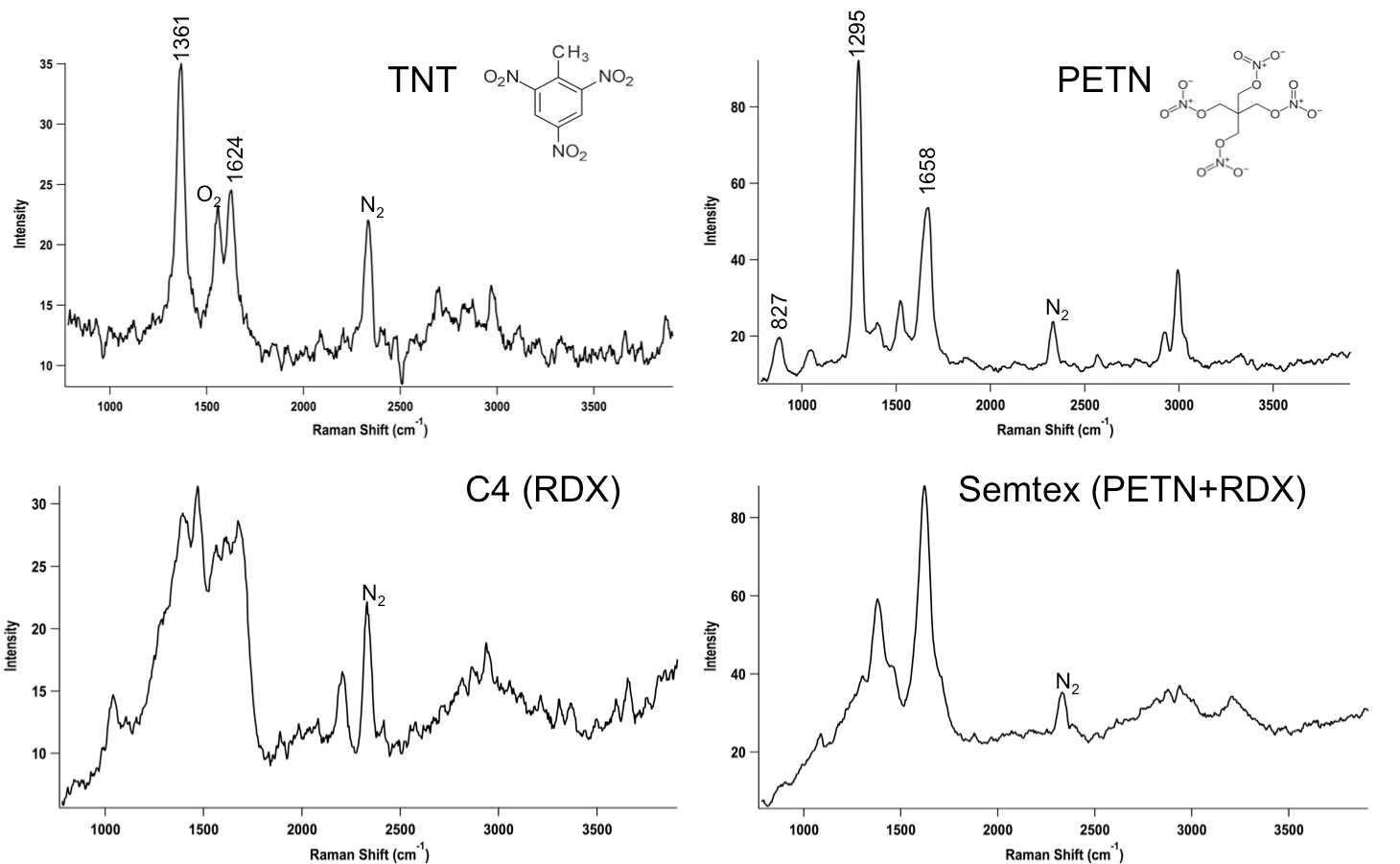Raman spectroscopy of chemical, biological, and explosive (CBE) materials provides a high specificity means to determine whether an unknown material is a CBE compound, related to or is a precursor for a CBE, or is simply non-hazardous/non-threatening. During the last two decades advancements in lasers, electronics, optics, and miniaturized computing systems have enabled the development of compact Raman instruments that mobilize this capability from the lab to theater. However, even with these advancements, the traditional visible and near IR Raman instruments are still plagued with 2 major issues: 1) naturally occurring and material-related fluorescence emissions that interfere and obscure the Raman scattering and 2) an overall low sensitivity of the Raman measurement. Consequently, these two problems reduce the probability of detection and increase false negatives.
A solution to obscuration by fluorescence background and increased probability of false negatives is to use deep ultraviolet (UV) (<250 nm) excitation sources that enable a fluorescence-free Raman region and increases sensitivity to materials from Rayleigh and resonance Raman effects. However one of the more interesting results of using the deep UV is that the traditionally obscuring autofluorescence can be used as an orthogonal means of detection. Since the fluorescence is many orders of magnitude more sensitive than Raman and resonance Raman, it acts as a means to increase the sensitivity and probability of detection. While the probability of false positives may be higher, coupling the autofluorescence with deep UV Raman allows for both rapid searching over large areas, a means to down-select areas of potential concern and the use of the Raman effect to provide the high specify – a search analysis not possible with traditional visible and near IR Raman spectrometers.
Photon Systems focuses on explosives detection using the combination of deep UV autofluorescence and Raman spectroscopy using deep UV sources that enable compact, low power consuming devices. Since we also manufacture the deep UV lasers that are a core enabling technology of these instruments, we have extensive experience with the deep UV Raman/fluorescence spectra using these compact deep UV laser. In addition, we have pioneered the fusion of fluorescence and Raman enabling a rapid, high sensitivity, high specificity analyses of explosives on surfaces.
STANDOFF 200
The STANDOFF 200 Analyzer is the first and only fully integrated real-time deep UV Raman and fluorescence analyzer instrument, providing complementary and confirmatory testing in a single handheld device.
TUCS 1000
The TUCS 1000 is a handheld instrument for laser based detection of trace chemicals in the fg or pg/cm2 concentration range.
DUV Raman PL 200
A fully integrated lab model deep UV resonance Raman and photoluminescence spectrometer with microscopic imaging.
Get In Touch
Keep informed about the latest deep UV developments at Photon Systems by joining our mailing list.
ADDRESS
1512 Industrial Park St. Covina, CA 91722-3417
PHONE
626 967-6431




